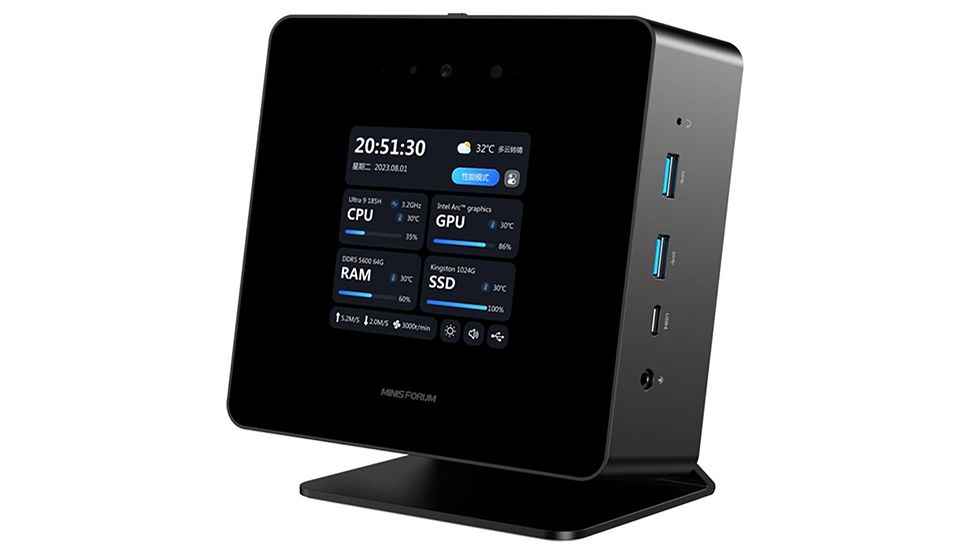Two moon landing missions show the spaceflight struggle is real
Japan has become the fifth nation to land on the moon, but the sun may have the final say in how much life is left in the mission.
The Japan Aerospace Exploration Agency — NASA‘s Japanese counterpart known as JAXA — announced that its robotic spacecraft survived descent onto the lunar surface at 12:20 a.m. on Jan. 20. But how much longer mission controllers on Earth will be able to communicate with the lander depends on whether its solar panels start generating electricity, said space agency leaders.
At the time, the SLIM spacecraft — short for Smart Lander for Investigating the Moon — was operating on battery power alone, with only a few hours remaining. The team said a change in the sun’s angle may turn things around for the mission.
“Even if the battery runs out and the SLIM loses all power, if the panel catches sunlight, then it will restart,” said Hitoshi Kuninaka, JAXA’s director general, through an interpreter. “We will be able to resume the operation of the SLIM in that instance.”
The SLIM mission launched from the Tanegashima Space Center in Japan on Sept. 7, 2023. Four months later, the uncrewed spacecraft seems to have landed on a slope of the Shioli Crater, a site on the moon’s near side.
JAXA picked the spot because of what it could tell scientists about the moon’s formation. A leading theory is that the moon was created after something enormous collided with Earth. If that’s true, much of the moon’s mantle could be similar to Earth rock. Astronomers speculate that some ejected lunar mantle pieces could be found near the surface at the crater, providing samples for further research.
The mission’s goal was to demonstrate a so-called “pinpoint landing” with an accuracy of less than 100 yards, a level of precision unprecedented for moon landings. Most landing targets are many square-miles in scope. To accomplish this feat, the spacecraft was outfitted with photo-matching technology to determine its location. That matching algorithm only requires a few seconds of processing time, agency officials said. Whether it worked as planned isn’t yet clear, but JAXA intends to provide more information to the public next week.
JAXA’s spacecraft is believed to be near the Shioli Crater on the moon’s near side.
Credit: NASA / LRO
The moon landing came one day after a U.S. company’s failed lunar spacecraft re-entered Earth’s atmosphere and broke apart over the south Pacific Ocean. Astrobotic Technologies’ Peregrine lander, carrying NASA instruments among other payloads, flew in space for 10 days but never reached lunar orbit, due to a detrimental fuel leak discovered on the first day of flight.
Mashable Light Speed
At a separate news conference, Astrobotic CEO John Thornton said he believed a faulty valve may have led to pressure rupturing a propellant tank.
“We were coming from the highest high of a perfect launch, and came down to a lowest low when we found out that the spacecraft no longer had the propulsion needed to attempt a moon landing,” he said.
NASA tapped Astrobotic as one of several vendors for its Commercial Lunar Payload Services initiative to explore the moon over the next few years. The company was the first to attempt the quarter-million mile trek to the moon.
The program has recruited the private sector to help deliver cargo, conduct experiments, and demonstrate new technology, as well as send back crucial data. Through these contracts, the U.S. space agency wants to establish a regular cadence of moon missions to prepare for sending Artemis astronauts to the moon.
About 60 years have passed since the first uncrewed moon landings, but touching down remains onerous. The moon’s exosphere — an extremely thin atmosphere of gasses barely held by the moon’s gravity — provides virtually no drag to slow a spacecraft down as it approaches the ground. Furthermore, there are no GPS systems on the moon to help guide a craft to its landing spot.
For decades, no one seemed interested in returning to the moon’s surface, but that has changed in recent years, with NASA’s Artemis campaign as the primary catalyst. Several nations and private companies have set their sights on the lunar south pole because of its ice, thought to be buried there in permanently shadowed craters. The natural resource is coveted because it could supply drinking water, oxygen, and rocket fuel for future missions.
Japan’s moon landing was preceded by India’s success last year, putting its Chandrayaan-3 spacecraft on the moon’s south pole region. Others that have made the journey include the former Soviet Union, United States, and China.
So far, no private company has been able to make the voyage or land without crashing. For now, though, NASA hasn’t lost its confidence in using commercial partners to get to the moon, said Joel Kearns, deputy associate administrator for exploration.
“Failure is often part of the road to success and flying and landing a newly developed spacecraft in space around the moon is extremely difficult,” Hearns said. “We’re embracing a risk posture where we know new companies will innovate, push the envelope, and we will all learn and grow from each flight.”


